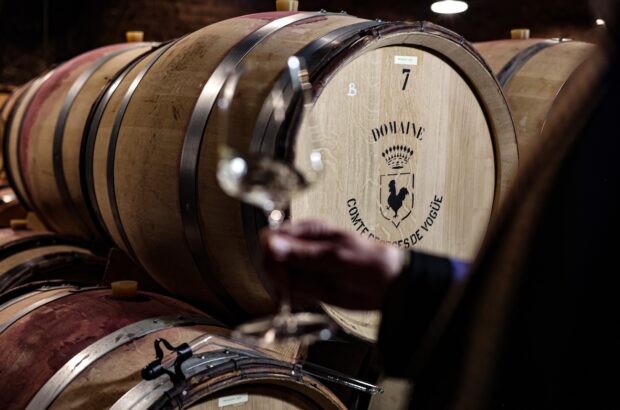A guide to ‘wine legs’, also referred to as ‘wine tears’ or ‘cathedral arches’, exploring whether they indicate wine quality or if this is best assessed through smell and taste. Wine legs are formed by the Gibbs-Marangoni Effect, a physical phenomenon related to alcohol evaporation and surface tension. They are more prominent in wines with higher alcohol, tannins or sugar and are affected by temperature, humidity and the glass.
‘In all the tastings I host, I get more questions about wine legs than any other topic,’ says Matt Walls, Decanter World Wine Awards’ Regional Chair for the Rhône. ‘It’s surely one of the most mythologised aspects of wine drinking.’
Believed by many to be a sign of quality, wine legs are in fact the innocent outcome of a physical phenomenon, determined by the wine’s chemical composition and affected by external factors such as temperature, humidity and pouring vessel.
What are wine legs?
Wine legs are droplets that form on the inside of a glass after you’ve swirled and liquid resettles to the bottom.
Some believed that the glycerol and the viscosity of the wine contributed to wine legs, but scientists have proven that alcohol plays a far more important role in forming these trickles of liquid.
What happens is, that a thin film of liquid is attached to the inside surface of the glass once swirled. When the alcohol, with a lower surface tension than water, starts to evaporate from this liquid veil, water and other molecules (such as tannins and sugar) form drops that then fall back into the glass forming the trail described as wine legs.
As Jane Anson puts it in a previous Decanter Magazine article, ‘When you swirl wine in your glass, alcohol will first gather at the sides, then start to evaporate, while the water (and other molecules in the wine) will turn into droplets that will crawl back to the glass, like raindrops on a window.’
This is known as the Gibbs-Marangoni Effect, named after the 19th-century physicists Carlo Marangoni and Josiah Willard Gibbs, who first studied the phenomenon and provided a theoretical explanation.
Scientists describe it as ‘the mass transfer along an interface between two fluids due to a gradient of the surface tension’ – essentially, when there are differences in surface tension across a liquid surface, the liquid tends to flow from regions of low surface tension to regions of high surface tension.
Walls explains that ‘tears are formed due to a combination of different forces – surface tension forces and intermolecular forces’ – which means that there are opposing forces between the evaporating molecules of alcohol and the heavier molecules of water, sugar and other components in wine which, pushed against the glass’s surface by the evaporating alcohol, bind with each other to form drops.
‘The reality is that wine legs tell you relatively little about the wine, and nothing about the quality of what’s in the glass’, says Walls. ‘The only information that legs offer to the wine lover is that your wine contains alcohol. But you don’t need legs to tell you that’.
Wines with higher alcohol content, therefore, will form tears more easily. As will wines that contain a larger number of heavier molecules – such as tannins and sugar – which explains why tears are more likely to be seen in heavy reds and/or sweet wines. However, none of these factors are definitive indicators of quality.
Moreover, many external factors condition whether and how the tears will form. Temperature and humidity are the most obvious influencing factors, given that they directly affect the alcohol’s evaporation rate.
The shape and texture of the glass also play a key role in changing the evaporation/condensation surface area and the way particles interact with each other.
Therefore, the legs may look different for the same wine depending on environmental conditions and the vessel used.
You can see “wine legs” as an indicator of some of the wine’s structural characteristics, but not of its quality. The more reliable way to accurately assess the quality of a wine is through smell and taste (the colour may provide some hints too, but it is not decisive either).
Ultimately, a wine’s quality is determined by whether all its different elements – aromas, acidity, alcohol level – are in balance.







